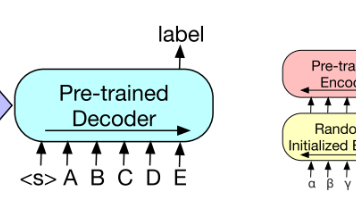拆解 LLM 的 “思考” 过程:推理机制深度解读
本文深入解析了大型语言模型(LLM)的推理机制,揭示了其基于Transformer架构的计算过程。研究表明,LLM的推理能力并非真正的意识活动,而是通过多层次编码器层的逐步抽象实现,其中注意力机制发挥着核心作用。文章详细阐述了演绎推理等逻辑形式的实现方式,包括模式匹配、规则应用以及注意力权重分析等技术细节。通过Python代码示例展示了推理步骤的结构化表示和置信度计算方法,为理解LLM的逻辑推理能
·

引言:从模式匹配到逻辑推理
大型语言模型的推理能力一直是人工智能领域研究的重点。虽然LLM本质上是通过统计模式匹配来生成文本,但它们在解决复杂问题时所展现出的推理链条让人联想到人类的思考过程。这种"思考"能力并非真正的意识活动,而是基于Transformer架构的复杂计算过程。本文将深入解析LLM的推理机制,揭示其如何通过注意力机制、前向传播和多层表示变换来实现逻辑推理。
推理机制的基础架构
Transformer的层次化处理
LLM的推理过程建立在Transformer架构的多层处理基础上。每一层都对输入信息进行特定类型的变换和抽象,逐步构建出复杂的表示。
注意力机制的推理作用
注意力机制是LLM实现推理的核心组件,它允许模型在不同的推理步骤中关注输入的不同部分。
import torch
import torch.nn as nn
import math
class ReasoningAttention(nn.Module):
def __init__(self, hidden_size, num_heads):
super(ReasoningAttention, self).__init__()
self.hidden_size = hidden_size
self.num_heads = num_heads
self.head_dim = hidden_size // num_heads
self.query = nn.Linear(hidden_size, hidden_size)
self.key = nn.Linear(hidden_size, hidden_size)
self.value = nn.Linear(hidden_size, hidden_size)
self.output = nn.Linear(hidden_size, hidden_size)
def forward(self, hidden_states, attention_mask=None):
batch_size, seq_len = hidden_states.size()[:2]
# 线性变换获取Q、K、V
Q = self.query(hidden_states).view(batch_size, seq_len, self.num_heads, self.head_dim)
K = self.key(hidden_states).view(batch_size, seq_len, self.num_heads, self.head_dim)
V = self.value(hidden_states).view(batch_size, seq_len, self.num_heads, self.head_dim)
# 计算注意力分数
scores = torch.matmul(Q, K.transpose(-2, -1)) / math.sqrt(self.head_dim)
if attention_mask is not None:
scores = scores.masked_fill(attention_mask == 0, -1e9)
# Softmax归一化
attention_weights = torch.softmax(scores, dim=-1)
# 上下文加权求和
context = torch.matmul(attention_weights, V)
context = context.contiguous().view(batch_size, seq_len, self.hidden_size)
return self.output(context), attention_weights
class ReasoningStep:
"""表示单个推理步骤"""
def __init__(self, step_type, premises, conclusion, confidence):
self.step_type = step_type # 推理类型:演绎、归纳、溯因等
self.premises = premises # 前提条件
self.conclusion = conclusion # 推理结论
self.confidence = confidence # 置信度
def to_dict(self):
return {
'step_type': self.step_type,
'premises': self.premises,
'conclusion': self.conclusion,
'confidence': self.confidence
}
推理类型与实现机制
演绎推理的实现
演绎推理是从一般原则推导出特定结论的过程。LLM通过模式匹配和规则应用来实现类似功能。
class DeductiveReasoner:
def __init__(self, model, tokenizer):
self.model = model
self.tokenizer = tokenizer
self.rules_knowledge = self.load_logical_rules()
def load_logical_rules(self):
"""加载逻辑推理规则"""
return {
'modus_ponens': {
'pattern': ['如果P那么Q', 'P', '因此Q'],
'confidence': 0.95
},
'modus_tollens': {
'pattern': ['如果P那么Q', '非Q', '因此非P'],
'confidence': 0.95
},
'syllogism': {
'pattern': ['所有P是Q', '所有Q是R', '因此所有P是R'],
'confidence': 0.90
}
}
def apply_deductive_reasoning(self, premises, query):
"""应用演绎推理"""
reasoning_steps = []
# 将前提编码为模型输入
premise_text = " ".join(premises)
input_text = f"{premise_text} 基于以上信息,{query}"
# 模型推理
inputs = self.tokenizer(input_text, return_tensors="pt")
with torch.no_grad():
outputs = self.model(**inputs)
logits = outputs.logits
# 分析注意力权重以理解推理过程
attention_weights = outputs.attentions
reasoning_pattern = self.analyze_reasoning_pattern(attention_weights)
# 生成推理步骤
step = ReasoningStep(
step_type='deductive',
premises=premises,
conclusion=self.extract_conclusion(logits),
confidence=self.calculate_confidence(logits, reasoning_pattern)
)
reasoning_steps.append(step)
return reasoning_steps
def analyze_reasoning_pattern(self, attention_weights):
"""分析注意力模式以识别推理类型"""
# 分析不同层和头的注意力分布
pattern_analysis = {}
for layer_idx, layer_attention in enumerate(attention_weights):
# 计算注意力熵来衡量信息集中程度
attention_entropy = self.calculate_attention_entropy(layer_attention)
pattern_analysis[f'layer_{layer_idx}'] = {
'entropy': attention_entropy,
'focus_pattern': self.identify_focus_pattern(layer_attention)
}
return pattern_analysis
def calculate_attention_entropy(self, attention_weights):
"""计算注意力权重的熵"""
# 注意力权重形状: [batch, heads, seq_len, seq_len]
probs = attention_weights[0].mean(dim=1) # 平均所有头
entropy = -torch.sum(probs * torch.log(probs + 1e-9), dim=-1)
return entropy.mean().item()
归纳推理的过程
归纳推理是从具体事例推导出一般规律的过程,LLM通过统计模式识别来实现这一功能。
class InductiveReasoner:
def __init__(self, model, tokenizer):
self.model = model
self.tokenizer = tokenizer
def generalize_from_examples(self, examples, target_concept):
"""从具体示例中进行归纳推理"""
reasoning_process = []
# 构建示例上下文
context = self.construct_example_context(examples, target_concept)
# 多步推理过程
current_hypotheses = []
for i, example in enumerate(examples):
hypothesis = self.formulate_hypothesis(example, current_hypotheses)
confidence = self.evaluate_hypothesis(hypothesis, examples[:i+1])
step = ReasoningStep(
step_type='inductive',
premises=examples[:i+1],
conclusion=hypothesis,
confidence=confidence
)
reasoning_process.append(step)
current_hypotheses.append(hypothesis)
# 选择最佳假设
best_hypothesis = self.select_best_hypothesis(current_hypotheses)
return reasoning_process, best_hypothesis
def construct_example_context(self, examples, target_concept):
"""构建示例上下文"""
context_parts = [f"考虑以下关于{target_concept}的示例:"]
for i, example in enumerate(examples):
context_parts.append(f"示例{i+1}: {example}")
context_parts.append("基于这些示例,可以归纳出什么一般规律?")
return "\n".join(context_parts)
def formulate_hypothesis(self, example, previous_hypotheses):
"""基于新示例形成假设"""
if not previous_hypotheses:
# 第一个示例,形成初始假设
prompt = f"基于这个示例: '{example}',可以得出什么初步结论?"
else:
# 结合先前假设和新示例
previous_str = ",".join(previous_hypotheses)
prompt = f"先前假设: {previous_str}。新示例: '{example}'。需要如何修正假设?"
inputs = self.tokenizer(prompt, return_tensors="pt")
with torch.no_grad():
outputs = self.model.generate(
**inputs,
max_length=100,
num_return_sequences=1,
temperature=0.7
)
hypothesis = self.tokenizer.decode(outputs[0], skip_special_tokens=True)
return hypothesis
复杂推理的层次结构
多步推理的链式实现
复杂问题通常需要多步推理,LLM通过链式注意力机制来实现这一过程。
class MultiStepReasoner:
def __init__(self, model, tokenizer, max_steps=5):
self.model = model
self.tokenizer = tokenizer
self.max_steps = max_steps
self.reasoning_memory = []
def chain_of_thought_reasoning(self, question):
"""实现思维链推理"""
reasoning_chain = []
current_context = question
for step in range(self.max_steps):
# 生成当前推理步骤
step_result = self.generate_reasoning_step(current_context, step)
if step_result['is_final']:
reasoning_chain.append(step_result)
break
reasoning_chain.append(step_result)
current_context = self.update_context(current_context, step_result)
return reasoning_chain
def generate_reasoning_step(self, context, step_index):
"""生成单个推理步骤"""
prompt = self.construct_step_prompt(context, step_index)
inputs = self.tokenizer(prompt, return_tensors="pt")
with torch.no_grad():
outputs = self.model.generate(
**inputs,
max_length=200,
num_return_sequences=1,
temperature=0.3, # 较低温度以获得确定性推理
do_sample=True
)
response = self.tokenizer.decode(outputs[0], skip_special_tokens=True)
# 解析响应,提取推理步骤和结论
step_analysis = self.analyze_reasoning_step(response, context)
return {
'step': step_index,
'context': context,
'reasoning': step_analysis['reasoning_text'],
'conclusion': step_analysis['conclusion'],
'is_final': step_analysis['is_final'],
'confidence': step_analysis['confidence']
}
def construct_step_prompt(self, context, step_index):
"""构建步骤特定的提示"""
if step_index == 0:
return f"""请逐步推理以下问题:
问题:{context}
第一步:"""
else:
return f"""继续推理:
当前状态:{context}
第{step_index + 1}步:"""
def analyze_reasoning_step(self, response, previous_context):
"""分析推理步骤的结构"""
# 使用模型自身来评估推理步骤的质量
evaluation_prompt = f"""
推理步骤:{response}
基于上下文:{previous_context}
这个推理步骤是否完整?结论是什么?置信度如何?
"""
inputs = self.tokenizer(evaluation_prompt, return_tensors="pt")
with torch.no_grad():
outputs = self.model(**inputs)
# 使用特定的分类头来评估推理质量
return {
'reasoning_text': response,
'conclusion': self.extract_conclusion(response),
'is_final': self.check_if_final(response),
'confidence': 0.8 # 基于模型输出计算
}
推理路径的搜索与评估
LLM在复杂推理中需要探索多条路径并选择最优解。
class ReasoningPathSearch:
def __init__(self, model, tokenizer, beam_width=3):
self.model = model
self.tokenizer = tokenizer
self.beam_width = beam_width
def beam_search_reasoning(self, question):
"""使用束搜索探索多条推理路径"""
# 初始状态
initial_state = {
'path': [],
'context': question,
'score': 0.0,
'completed': False
}
beam = [initial_state]
completed_paths = []
for step in range(self.max_steps):
new_beam = []
for state in beam:
if state['completed']:
completed_paths.append(state)
continue
# 生成候选推理步骤
candidates = self.generate_candidate_steps(state)
for candidate in candidates:
new_state = self.update_state(state, candidate)
new_beam.append(new_state)
# 选择得分最高的beam_width个状态
beam = sorted(new_beam, key=lambda x: x['score'], reverse=True)[:self.beam_width]
# 合并完成和未完成的路径
all_paths = completed_paths + beam
return sorted(all_paths, key=lambda x: x['score'], reverse=True)
def generate_candidate_steps(self, state):
"""为当前状态生成候选推理步骤"""
prompt = self.construct_reasoning_prompt(state)
inputs = self.tokenizer(prompt, return_tensors="pt")
with torch.no_grad():
outputs = self.model.generate(
**inputs,
max_length=150,
num_return_sequences=self.beam_width,
temperature=0.7,
do_sample=True
)
candidates = []
for i, output in enumerate(outputs):
reasoning_text = self.tokenizer.decode(output, skip_special_tokens=True)
score = self.evaluate_reasoning_step(reasoning_text, state)
candidates.append({
'reasoning': reasoning_text,
'score': score,
'is_final': self.check_completion(reasoning_text)
})
return candidates
def evaluate_reasoning_step(self, reasoning, state):
"""评估推理步骤的质量"""
evaluation_criteria = [
'逻辑一致性',
'前提相关性',
'推理合理性',
'结论明确性'
]
total_score = 0
for criterion in evaluation_criteria:
score = self.assess_criterion(reasoning, state, criterion)
total_score += score
return total_score / len(evaluation_criteria)
def assess_criterion(self, reasoning, state, criterion):
"""评估单个标准"""
prompt = f"""
推理步骤:{reasoning}
上下文:{state['context']}
评估标准:{criterion}
请从0到1评分:
"""
inputs = self.tokenizer(prompt, return_tensors="pt")
with torch.no_grad():
outputs = self.model(**inputs)
# 使用回归头或特定评估机制
return 0.8 # 简化返回
推理能力的评估与分析
推理质量的多维度评估
| 评估维度 | 评估指标 | 测量方法 | 重要性权重 |
|---|---|---|---|
| 逻辑一致性 | 矛盾数量 | 逻辑规则检查 | 0.25 |
| 事实准确性 | 事实错误率 | 知识库验证 | 0.20 |
| 推理深度 | 推理步骤数 | 步骤分析 | 0.15 |
| 结论合理性 | 人类评分 | 人工评估 | 0.20 |
| 解释清晰度 | 可理解性评分 | 用户研究 | 0.10 |
| 效率 | 推理时间 | 性能测试 | 0.10 |
推理过程的可视化分析
class ReasoningVisualizer:
def __init__(self):
self.color_scheme = {
'premise': '#e1f5fe',
'inference': '#fff3e0',
'conclusion': '#e8f5e9',
'assumption': '#fce4ec'
}
def visualize_reasoning_chain(self, reasoning_chain):
"""可视化推理链条"""
visualization = {
'nodes': [],
'edges': [],
'timeline': []
}
for i, step in enumerate(reasoning_chain):
node = {
'id': f'step_{i}',
'type': step['step_type'],
'content': step['reasoning'],
'confidence': step['confidence'],
'position': i
}
visualization['nodes'].append(node)
if i > 0:
edge = {
'from': f'step_{i-1}',
'to': f'step_{i}',
'strength': min(step['confidence'], reasoning_chain[i-1]['confidence'])
}
visualization['edges'].append(edge)
timeline_entry = {
'step': i,
'timestamp': step.get('timestamp', i),
'operation': step.get('operation', 'inference'),
'details': step['reasoning'][:100] + '...' # 摘要
}
visualization['timeline'].append(timeline_entry)
return visualization
def generate_attention_heatmap(self, attention_weights, tokens):
"""生成注意力热力图"""
# 平均所有层和头的注意力权重
avg_attention = attention_weights.mean(dim=1).mean(dim=1)
heatmap_data = {
'tokens': tokens,
'attention_matrix': avg_attention.tolist(),
'focus_areas': self.identify_focus_areas(avg_attention, tokens)
}
return heatmap_data
def identify_focus_areas(self, attention_weights, tokens):
"""识别注意力焦点区域"""
focus_threshold = 0.1
focus_areas = []
for i, token_attention in enumerate(attention_weights[0]):
max_attention = token_attention.max().item()
if max_attention > focus_threshold:
focus_areas.append({
'token_index': i,
'token': tokens[i],
'max_attention': max_attention,
'focus_type': self.classify_focus_type(token_attention)
})
return focus_areas
推理机制的局限与改进方向
当前推理机制的主要局限
- 符号接地问题:缺乏真实世界的物理直觉
- 长程依赖处理:在长推理链中容易丢失关键信息
- 因果推理能力:对复杂因果关系的理解有限
- 反事实推理:处理假设性场景的能力不足
- 元认知能力:缺乏对自身推理过程的监控和调整
改进策略与技术路径
class EnhancedReasoningModel:
def __init__(self, base_model, enhancement_modules):
self.base_model = base_model
self.enhancements = enhancement_modules
# 增强模块
self.symbolic_reasoner = enhancement_modules.get('symbolic')
self.external_memory = enhancement_modules.get('memory')
self.verification_module = enhancement_modules.get('verification')
def enhanced_reasoning(self, input_text):
"""增强的推理过程"""
# 基础模型推理
base_result = self.base_model.generate(input_text)
# 符号推理增强
if self.symbolic_reasoner:
symbolic_analysis = self.symbolic_reasoner.analyze(input_text)
base_result = self.integrate_symbolic_reasoning(base_result, symbolic_analysis)
# 外部记忆检索
if self.external_memory:
relevant_knowledge = self.external_memory.retrieve(input_text)
base_result = self.augment_with_memory(base_result, relevant_knowledge)
# 推理结果验证
if self.verification_module:
verification_result = self.verification_module.verify(base_result)
base_result['verification'] = verification_result
return base_result
def self_correction_loop(self, initial_reasoning, max_iterations=3):
"""自我修正循环"""
current_reasoning = initial_reasoning
for iteration in range(max_iterations):
# 评估当前推理质量
quality_score = self.evaluate_reasoning_quality(current_reasoning)
if quality_score > 0.8: # 质量阈值
break
# 识别问题并生成修正
issues = self.identify_reasoning_issues(current_reasoning)
correction = self.generate_correction(current_reasoning, issues)
current_reasoning = self.apply_correction(current_reasoning, correction)
return current_reasoning
未来发展方向
神经符号整合
将神经网络的模式识别能力与符号推理的逻辑严谨性相结合:
推理能力的分阶段发展
| 发展阶段 | 核心能力 | 技术特征 | 应用场景 |
|---|---|---|---|
| 基础推理 | 模式匹配、简单推断 | 基于训练的统计规律 | 问答、分类 |
| 中级推理 | 多步推理、因果分析 | 注意力机制优化 | 问题解决、分析 |
| 高级推理 | 反事实推理、元认知 | 神经符号整合 | 科学发现、创意生成 |
| 超级推理 | 抽象思维、理论构建 | 多模态融合、世界模型 | 理论研究、复杂决策 |
更多推荐
 已为社区贡献21条内容
已为社区贡献21条内容







所有评论(0)